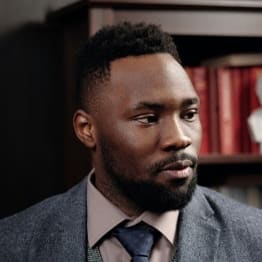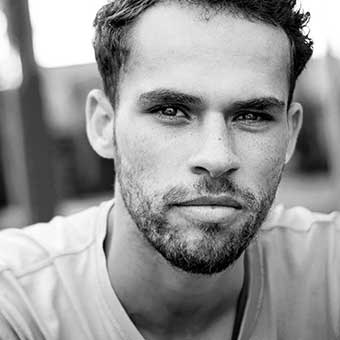
Nursing is a calling and not a profession; it’s science, compassion, critical thinking, and care all combined to provide the best patient outcomes. This practice is based on a strong framework of nursing theories at its core. Building on the knowledge derived from experiences, or informed learning, these structured bodies of knowledge appealed to nurses as they provided foundational guidance in caring for patients, communicating with them, and planning research, while also aiding in developing the educational needs of nurses.
Nursing students should understand these theories. They can be regarded as lenses through which to understand the nursing experience, make better decisions, and help develop and enhance the science of nursing or healthcare delivery in general. The study of the most important nursing theories allows students to view the historical foundations and modern applications of nursing science.
In this current time of high chronic illness, aging populations, mental health challenges, and technology, nursing theory is needed to hold everything together. It contributes to ethical practice, allows for interdisciplinary collaboration, and guarantees standards-based, evidence-based care of sufficient quality. The topic of this article will be the top 10 nursing theories that all students should know about. Begin by exploring the correlation of the theory of Florence Nightingale, Jean Watson’s Theory of Human Caring, between the time of Florence Nightingale and the time of nursing today. This guide is based on detailed nursing theory examples and real-world applications to support the integration of theory into clinical practice and nursing education.
A Brief History and Evolution of Nursing Theories
In the past, nursing was task-centered and theoretically ungrounded. Nightingale’s work was the turning point in that nurses incorporated environment and ethics into practice. Mid-20th century theorists, such as Henderson, Orem, and Peplau, started conceptualizing nursing as both an art and a science.
In the last few decades, interdisciplinary and evidence-based practices have shaped nursing theories. Contemporary theories today integrate cultural competence, psychological insights, and technology, making them relevant to contemporary healthcare systems.
Nursing Theories
Florence Nightingale's Environmental Theory
In the 19th century, Florence Nightingale introduced the environmental theory as the pioneer of modern nursing. However, she had emphasized as much the importance of a patient’s surroundings in healing, clean air, sufficient lighting, clean sanitation, and quiet environments.
Modern practice: So far, this nursing theory application is practiced in hospital design, infection control measures, and public health policies. The Florence Nightingale nursing theory, for example would feature modern hospital features such as wide windows for natural light as well as high ventilation standards to reduce infection risk as hospitals continue to embody the principles of the Florence Nightingale nursing theory today. In the time of COVID-19 pandemic, Nightingale’s theory informed about the decisions on environmental hygiene and ventilation in isolation units.
Patricia Benner's Novice to Expert Theory
Benner described nursing skill acquisition in five stages: novice, advanced beginner, competent, proficient, and expert. This framework is notable in emphasizing the importance of clinical judgment and experiential learning.
Use: Nursing instructors frequently use Benner’s model to measure student progress. Novice nurses begin with protocol-based practice, whereas experienced nurses apply intuitive judgment based on experience. This model is used in the planning and implementation of mentorship and skill acquisition programs. It is also employed by hospitals in the planning of continuing professional development (CPD) programs.
Jean Watson's Human Caring Theory
This is a holistic model to complete caring of the body, mind, and spirit. Her “carative factors,” now termed “caritas processes,” promote compassion, empathy, and the evolution of healing between patient and nurse.
Use: Jean Watson’s model is most frequently applied in environments such as palliative care, oncology, and mental health nursing. It requires nurses to focus on presence, compassionate listening, and emotional support, especially with patients who are undergoing trauma or end-of-life care. A hospice nurse giving spiritual support and nonverbal care to a terminally ill patient, thereby applying Watson’s model in direct care, is an example.
Callista Roy's Adaptation Model
Roy conceived of patients as adaptive systems that interact with the environment. Her approach emphasizes assisting people in adapting to alterations in health in four ways: physiological, self-concept, role function, and interdependence.
Application: Roy’s model is common in rehabilitation and surgery recovery environments. Nurses help the patients adjust emotionally and physically, such as getting amputees to come to terms with and learn to deal with new reality with prosthetics and counseling. It is also effective in children’s nursing, where children learn to adjust to chronic illnesses like asthma or diabetes.
Dorothea Orem's Self-Care Deficit Nursing Theory
Orem’s concept emphasizes empowering people to take care of themselves. It specifies when nursing care is required—i.e., when the individual is not able to care for themselves.
Use: Used extensively in chronic illness care and rehabilitation, this nursing theory among students emphasizes the value of student education. Diabetic patients are able to learn how to control their glucose and diet by themselves, courtesy of interventions based on Orem’s theory. A stroke patient is another example, relearning simple routines such as bathing with the help of directed nursing care and assistive devices.
Imogene King's Goal-Attainment Theory
King’s theory focuses on cooperation between the patient and the nurse to obtain specific health objectives. It is based on communication, understanding, and dynamic interaction.
Application: Similarly, in maternal-child health, nurses and mothers work together on breastfeeding objectives. The theory facilitates discharge planning and patient-centered care measures that emphasize patient autonomy and satisfaction. Lifestyle goals (e.g., exercise and dietary modification) in treating patients with hypertension are consistent with King’s principles.
Hildegard Peplau's Interpersonal Relations
Peplau’s model situates nursing as an interpersonal, therapeutic process. She established four steps: orientation, identification, exploitation, and resolution, all aimed toward the nurse-patient relationship.
Use: Mental health nurses apply Peplau’s theory to establish patient rapport. Generally, in practice, it enables nurses to handle charged situations by keeping professionalism, empathy, and boundaries in check. For instance, a psychiatric nurse establishing trust with a patient with hallucinations is representative of how the theory is applied.
Betty Neuman's Systems Model
Neuman described patients as open systems susceptible to stressors in the environment. Nurses attempt to ensure stability through prevention and intervention on several dimensions.
Application: This model directs care in high-intensity settings such as ICUs and emergency wards. Nurses evaluate stressors—biological, psychological, and social—and apply strategies like patient education, medications, or counseling to stabilize the system. Neuman’s model is also applied in community nursing, where factors such as housing and work affect health.
Madeleine Leininger's Transcultural Nursing
This theory, proposed by Leininger, focuses on cultural sensitivity and awareness in the delivery of health care. According to Leininger, knowing the cultural context of a patient will produce better and more respectful care.
Application: This model is in place in multicultural nursing environments. Nurses adapt care planning to meet dietary needs, communication styles, and traditional healing methods. Leininger’s framework is part of cultural competency training programs across the globe. For example, knowing that in some cultures the family must be present during end-of-life care allows nurses to ensure culturally congruent care.
Nola Pender's Health Promotion Model
Pender’s model focuses on health promotion, not on disease treatment. It investigates what contributes to behaviors that affect health, including self-efficacy, perceived benefits, and support from others.
Application: This model is applied in schools and in community health. Nurses plan interventions aimed at promoting healthy behaviors such as regular exercise, smoking, and proper eating, particularly in vulnerable populations. Increased flu vaccination rates or the prevention of teenage vaping are real-life examples of this use.
How to Choose the Right Nursing Theory
Choosing the right nursing theory is based on several factors:
• Environment of care: Neuman’s is appropriate in emergency settings, whereas Watson’s is appropriate in hospices.
• Patient Population: Orem’s model is appropriate with patients who need self-care education; Leininger’s suits multicultural communities.
• Educators will draw on Benner’s model; nurse managers will apply King’s theory to communication and collaboration.
• Values and Philosophy: Nurses interested in holistic or spiritually oriented care will be attracted to Watson’s or Rogers’ models.
Integrating theory strengthens the quality of care and promotes a reflective, evidence-based practice.
Why Nursing Theories Matter in 2025 and Beyond
With advancing health care, nursing theory is as relevant now as it has ever been. New technologies such as AI and telemedicine are transforming care delivery, but in the absence of theory, nursing becomes mechanistic. Theories sustain humanity in care.
Global challenges such as health disparities, pandemics, and aging populations require flexible, theoretically grounded practice. Nursing theory provides a framework to approach dilemmas, advance policy, and adopt innovation while retaining patient focus. For instance, embedding cultural theories such as Leininger’s in AI architecture promotes equity and inclusiveness in healthcare algorithms.
Nursing theory is dynamic and evolves with evidence and reflection. Students who know these theories are better able to become change agents and leaders in worldwide health care.
Application of Nursing Theories in Practice
Application of nursing theories is seen in day-to-day clinical practice:
• Florence Nightingale nursing theory: Applied in hospital sanitation and infection control.
• Jean Watson’s theory: Utilized in compassionate end-of-life care.
• Benner’s model: Utilized by teachers in evaluating and guiding new nurses.
• King’s theory: Enables patient-centered care planning.
For nursing students, the use of theories closes the gap between the classroom and practice. It encourages clinical reasoning, enhances communication, and promotes professional self-confidence.
Conclusion
Nursing theories are the foundation of professional nursing practice. They establish the parameters of care, inform moral codes, and direct clinical judgment. Starting from the historical context of Florence Nightingale to the humanistic principles of Jean Watson’s model, each model has its own distinct contributions to patient-centered and holistic care.
For nursing students, the mastery of the most vital nursing theories is not merely educational enrichment, but is instead a means to lifelong professional achievement. Nursing student theory improves critical thinking, enhances successful clinical communication, and equips impending nurses to address varied patient needs in all healthcare environments.
As health care evolves, so must that of the individuals who work in it. By accepting and embracing both the history and potential of the future in nursing theory, nurses may not only be prepared to be effective caregivers. Still, they may also be prepared to be innovators and leaders in the nursing industry.
Through application of nursing practice and real-world examples of nursing theories, learners better understand how to provide compassionate and evidence-based care that honors the distinctiveness of each patient. Adopting these theories today means improved healthcare for the future.
FAQs about Nursing Theories
What are nursing theories?
Nursing theories are conceptual frameworks that establish nursing’s role, function, and procedures in patient care.
How are nursing theories used in clinical practice?
They direct care plans, interventions, assessments, and communication strategies specific to a patient’s individual needs.
Why should nursing students learn these theories?
Learning theories improves clinical reasoning, enhances critical thinking, and promotes ethical practice.
Do I have to work with only one theory in my practice?
Yes. Nurses tend to combine several theories to deliver holistic, patient-focused care.
What are the most significant nursing theories?
Florence Nightingale’s Environmental Theory and Jean Watson’s Theory of Human Caring are universally known to be seminal and influential.
Do nursing theories change with time?
Nursing theories keep pace with changes in society, research findings, and developments in healthcare technologies.
Are nursing theories included in nursing exams or licensure exams?
Yes. Most licensure exams will have questions regarding application of nursing theory, particularly in patient care situations.
Where are examples of real-world nursing theories?
Theory-based interventions are frequently found in clinical case studies, academic journals, and nursing textbooks.
What are the differences between nursing theories and nursing models?
A model is frequently used to represent visually or in simplified form, while theories are more general and consist of assumptions, concepts, and propositions.
Are there nursing education or leadership-specific theories?
Yes. Benner’s theory is used in education, whereas King’s Goal Attainment Theory and Transformational Leadership models are utilized in nursing leadership.
Our Services
This is what our professionals are good at

Nursing Dissertation Help
Get professional help with your dissertation and thesis from top nursing writers here.

Nursing Essay Writing Help
Are you struggling with your essay? get in touch with us for exceptional services

Nursing Capstone Writing
Capstone projects might be challenging to complete, but our professionals are here to handle them for you

EBP Assignment Help
We have professionals with more than 10 years of experience in Evidence-Based Practices ready to assist you. Follow the link to get started
Why Choose Us
Plagiarism- free papers
Get original papers from our top nursing writers
Cheap Nursing Papers
Affordability is our top-priority, contact us for the cheapest services
Timely delivery
We ensure every project is delivered within the specified deadline
Money back Guarantee
Get 100% money back when we the order deliverd does not meet your requirements
Our Team
Meet our top writers based around the globe who ensure your projects are delivered on time and meet professional standards.

Dr Olivia Luna
Essay writer and Capstone Project writer

Prof. Evelyn Adit
Dissertation and Thesis Writer

Prof. Liam Jackson
EBP expert and Essay writer

Jackson Luther
Professional writer in essays, capstones, and thesis

